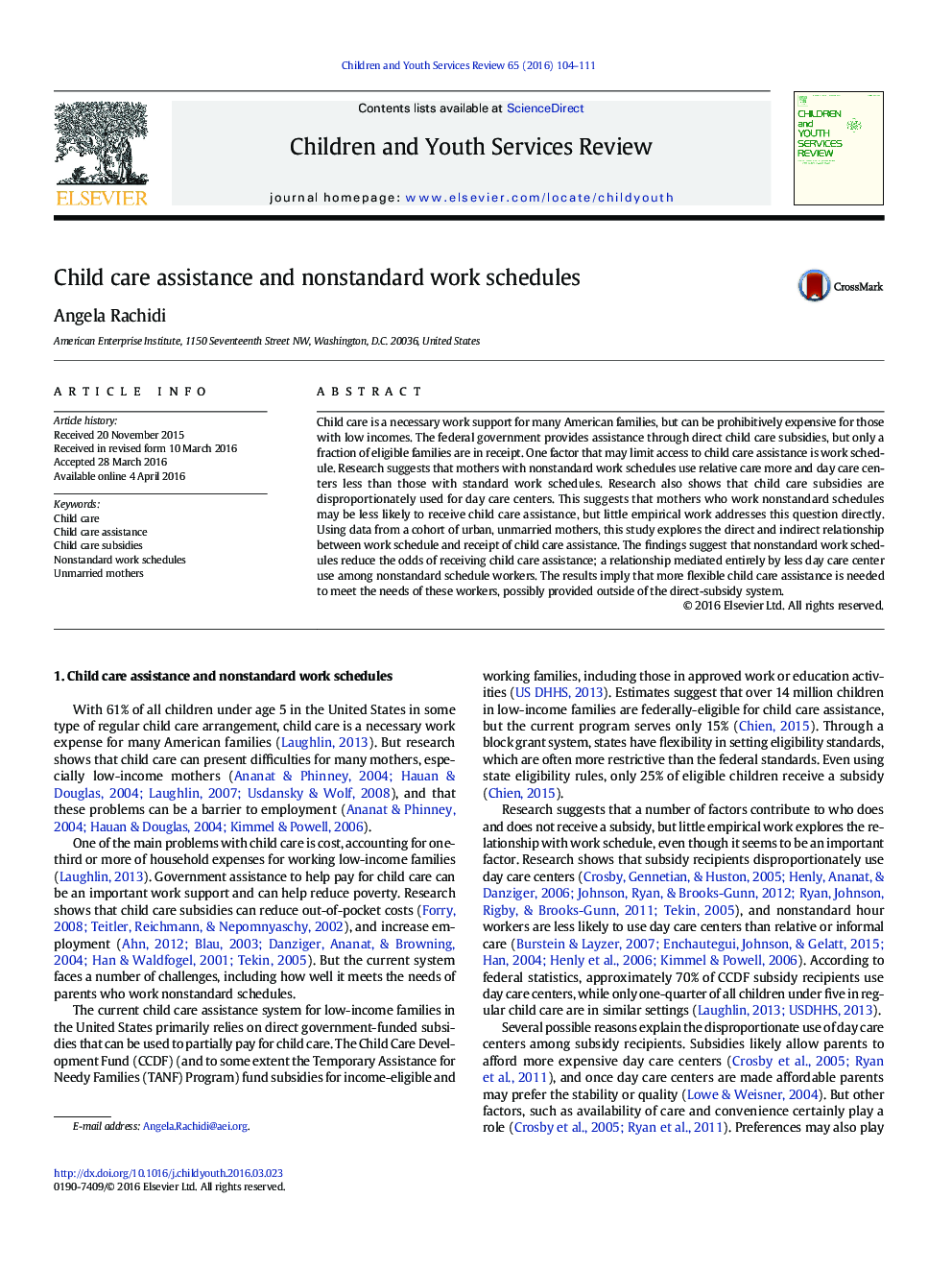| Article ID | Journal | Published Year | Pages | File Type |
|---|---|---|---|---|
| 345812 | Children and Youth Services Review | 2016 | 8 Pages |
•Nonstandard hour workers were less likely to receive child care assistance.•This relationship was entirely mediated by less use of day care centers.•The current direct-subsidy system may be ill-suited to nonstandard hour workers.•Alternatives should offer a flexible child care benefit for nonstandard schedule workers.
Child care is a necessary work support for many American families, but can be prohibitively expensive for those with low incomes. The federal government provides assistance through direct child care subsidies, but only a fraction of eligible families are in receipt. One factor that may limit access to child care assistance is work schedule. Research suggests that mothers with nonstandard work schedules use relative care more and day care centers less than those with standard work schedules. Research also shows that child care subsidies are disproportionately used for day care centers. This suggests that mothers who work nonstandard schedules may be less likely to receive child care assistance, but little empirical work addresses this question directly. Using data from a cohort of urban, unmarried mothers, this study explores the direct and indirect relationship between work schedule and receipt of child care assistance. The findings suggest that nonstandard work schedules reduce the odds of receiving child care assistance; a relationship mediated entirely by less day care center use among nonstandard schedule workers. The results imply that more flexible child care assistance is needed to meet the needs of these workers, possibly provided outside of the direct-subsidy system.
